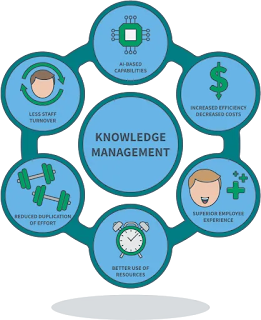The Human Resource Management in an organization
Introduction-
Human resources are considered as the main body of any organization. Human resource management is the fastest growing concept. Managing the practices and policies of employees and employees helps the company grow. Manpower management company's ability to utilize elements of the organization to fulfill its mission and role in the organization's mission and objectives. Good HR management is very important if the organization wants to attract good employees. It also means that a company reduces the risk to its employees and reputation. Human resource management can reduce organizational costs. Includes all administrative processes and decisions that can motivate HR personnel. Human resource management is the management of an employee's compensation and benefits approach.
The Strategic Role of Human Resource Management
The HR team proposes to the management team how to strategically manage people as a business resource. This includes hiring and retaining employees with specialized skills, coordinating employee benefits and recommending employee training and development strategies to meet the company's current and future goals.
Figure 01, The Role of Human Resource Management in an Organization
The Role of Human Resource Management in an Organization
01.Developing skills for the future-
Managers and HR professionals at all levels of the organization develop the skills of employees.
02.Build loyalty and commitment-
HR specialists recommend strategies to increase employees- commitment to the company. It begins with the recruiting process or by matching employees to the right positions according to their qualifications.
03.Set up a talent pipeline-
Helps build the talent pipeline within HRM.
04.staying current and competitive-
Manpower management requires strategic planning, not only of the changing needs of the employer, but also of the ever changing job market. Employer benefits packages must be continually evaluated for costs determined by the employer.
05.Compensation and Benefits-
Human resource managers provide guidance and guidance for compensation and excellent benefits. Human resource managers in this discipline develop strategic compensation plans, coordinate with the performance management system's compensation plan, and monitor all company health benefits for company employees.
06.Training and development-
Human resource managers periodically assess needs and determine performance and what type of training is needed. They review employee performance reports to identify areas where employee skills can be improved or through employee development, such as leadership techniques or seminars or workshops.
07.Employee Benefits Employee Relations-
The Personal Relationship Specialist is responsible for investigating and resolving employee issues, and the HR Manager is the ultimate responsibility for protecting employee-employee relationships. Effective Employee Relationship Strategy Strategies are important steps to ensure the overall well-being of employees.
08.Recruitment and selection-
The HR Manager is primarily responsible for corporate branding decisions and is involved in the recruitment and retention of talented employees. For example, a human resources manager in a health care organization can use his or her knowledge of nursing barriers to develop an employee barrier strategy or to maintain existing staff positions.
Conclusion
Human resources are a key component of the success or failure of program monitoring objectives. Human resource management plays an important role in achieving organizational objectives through human resource planning and performance management. HRM makes a company more efficient by performing performance appraisals. The HR department should help to attract, recruit, select and train the employees.
Human resources are considered as the main body of any organization. Human resource management is the fastest growing concept. Managing the practices and policies of employees and employees helps the company grow. Manpower management company's ability to utilize elements of the organization to fulfill its mission and role in the organization's mission and objectives. Good HR management is very important if the organization wants to attract good employees. It also means that a company reduces the risk to its employees and reputation. Human resource management can reduce organizational costs. Includes all administrative processes and decisions that can motivate HR personnel. Human resource management is the management of an employee's compensation and benefits approach.
The Strategic Role of Human Resource Management
The HR team proposes to the management team how to strategically manage people as a business resource. This includes hiring and retaining employees with specialized skills, coordinating employee benefits and recommending employee training and development strategies to meet the company's current and future goals.
Figure 01, The Role of Human Resource Management in an Organization
The Role of Human Resource Management in an Organization
01.Developing skills for the future-
Managers and HR professionals at all levels of the organization develop the skills of employees.
02.Build loyalty and commitment-
HR specialists recommend strategies to increase employees- commitment to the company. It begins with the recruiting process or by matching employees to the right positions according to their qualifications.
03.Set up a talent pipeline-
Helps build the talent pipeline within HRM.
04.staying current and competitive-
Manpower management requires strategic planning, not only of the changing needs of the employer, but also of the ever changing job market. Employer benefits packages must be continually evaluated for costs determined by the employer.
05.Compensation and Benefits-
Human resource managers provide guidance and guidance for compensation and excellent benefits. Human resource managers in this discipline develop strategic compensation plans, coordinate with the performance management system's compensation plan, and monitor all company health benefits for company employees.
06.Training and development-
Human resource managers periodically assess needs and determine performance and what type of training is needed. They review employee performance reports to identify areas where employee skills can be improved or through employee development, such as leadership techniques or seminars or workshops.
07.Employee Benefits Employee Relations-
The Personal Relationship Specialist is responsible for investigating and resolving employee issues, and the HR Manager is the ultimate responsibility for protecting employee-employee relationships. Effective Employee Relationship Strategy Strategies are important steps to ensure the overall well-being of employees.
08.Recruitment and selection-
The HR Manager is primarily responsible for corporate branding decisions and is involved in the recruitment and retention of talented employees. For example, a human resources manager in a health care organization can use his or her knowledge of nursing barriers to develop an employee barrier strategy or to maintain existing staff positions.
Conclusion
Human resources are a key component of the success or failure of program monitoring objectives. Human resource management plays an important role in achieving organizational objectives through human resource planning and performance management. HRM makes a company more efficient by performing performance appraisals. The HR department should help to attract, recruit, select and train the employees.
References-
Dyer, Human Resource
Management: Evolving roles and responsibilities, Washington,
Armstrong, M. and Stephen
Taylor (2014) Armstrong Handbook of Human Resource management practice, 13th edition













